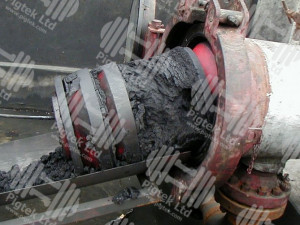What is Pipeline Pigging and How does it work?
Pipelines, when clogged or blocked up, can cause no end of difficulties for those who depend on them – and if they are left untreated to clog up for an extensive amount of time, it is highly likely that cracks may form along the inside of the pipeline, which can cause no end of damage and difficulty later down the line. For cost-effectiveness and to avoid any damages done to pipelines in this way, it is recommended that this type of pigging be performed to clear any debris as soon as possible.
A pipeline pig is a small, often cylindrical tool which can be introduced into a pipeline either by product flow or can be pulled in via an internal cable – the pig can then be dragged through the pipeline not only to push and clear debris ahead, but also to help investigate any issues that may be occurring further down the line that the naked eye may not be able to attend to.
What is Pipeline Pigging and the different types of pig available
Pipeline Pigging may sound simple, however, it is always important to understand the specific needs and shape of the pipeline that is looking to be cleared or investigated – as there are a variety of different pigs that can be used for different jobs, and sizes and shapes of pipelines. It is also difficult to plan ahead for as and when pigging will be needed, due to factors of wear and tear and the exact nature of debris being built up within the pipes.
The different types of pig available to help attend to pipelines are built to attend to specific jobs. It is therefore extremely important to assess which type of work needs to be undertaken before opting to move ahead with pigging pipelines.
Utility Pigs
A Utility Pig is perhaps the most common, as it is used to help unblock and remove debris from the inside of pipelines. These pigs are often used to help remove any internal debris before production work can begin, and to ensure that any unwanted material is removed entirely before work can continue. Utility Pigs can be sold in the form of Foam Pigs, Mandrel Pigs and Spherical Pigs – as no two pipelines are the same.
Inspection Pigs
Otherwise known as Smart Pigs, these tools can be used to scout through pipelines and receive data on the internal situation either by use of magnetic flux or ultrasonic technology. Either method will help the user determine pipeline thickness, diameter, curvature and bends, and even pipeline temperature – making them extremely useful research tools ahead of any work that may need to go ahead through the pipeline(s) in question. Magnetic Pigs in particular are handy in spotting corrosion or leakage in need of attention.
Plugs
A Plug is a ‘speciality’ pig that can be used to isolate a certain portion of pipework by blocking the way – and these come in a number of different shapes and sizes to ensure for a variety of needs and jobs to be adhered to.
Gel Pigs
Gel Pigs are fantastic for flushing out any number of pipeline issues, such as the removal of debris, unwanted material, condensation or even a stuck pig – these can be used in addition to standard pig tools and are therefore perfect to put through a pipeline to ensure that all foreign bodies are accounted for.
Due to the nature of pipelines, there are more and more pigs being produced on a regular basis, meaning that this guide is only a starting impression as to what is ultimately available to pipelines at this time. For more information, why not contact us by calling or emailing directly at Pigtek and we will be happy to provide knowledge and product advice as well as a superb range of pipeline tools you may need to depend upon.
 Pigtek Ltd
Pigtek Ltd





